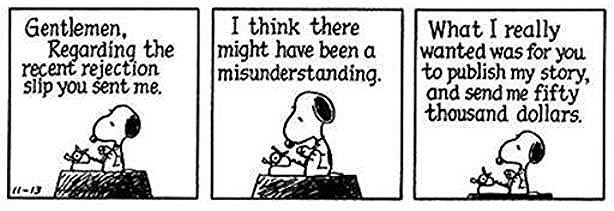
Today’s post comes from Editor Ed, a long-time friend of mine who is also a small press publisher, editor, and author in his own right. You can find his books at Pickman’s Press.
As an editor, I read a lot of stories—including a lot of bad ones. Badly written fight scenes are a personal pet peeve of mine. As best, I’m simply bored. At worst, I get confused, can’t clearly visualize what’s happening, and grow frustrated.
Consequently, I spend a lot of time pondering why one fight scene worked while another, similar fight scene didn’t. So here are six little writing tweaks you can use to keep your fight scene action quick, clean, exciting, and most importantly, readable. These might seem like tiny nit-picky changes, but a few dozen such changes can have a huge cumulative effect.

1. Be careful with pronouns.
This is the most common problem I see. Pronouns can confuse readers and make them lose track of who’s doing what, especially in fight between two people of the same gender. For example, “he punched him” is unclear. “Bob punched Mike” is much clearer. After writing your fight scene, check it carefully for any ambiguous pronouns, and replace them with names.
2. Keep cause and effect in the right order.
This is the second most common problem I see. Although this may seem obvious, some writers like to reverse the order, describing the effect and then explaining the cause. For example, “Suddenly Mike screamed and fell to the ground, for he had been stabbed in the back”. This is awkward for the audience, who has to reverse the cause and effect in their mind before they can properly visualize it, causing a brief snag in the flow of action. Also, sometimes the effect makes no sense without knowing the cause, and the audience has a brief moment of utter confusion, wondering why in the world Mike is screaming. Writing “suddenly Mike was stabbed in the back, screamed, and fell to the ground” is much easier to understand.

3. Use short, simple, common language whenever possible.
A fight scene is NOT the time or show off your big vocabulary of long, complex, or obscure words. When you use words the average reader doesn’t know, you’re creating a brief instant of confusion and incomprehension for the audience, a “speed bump” that slows down the action flow while they re-read the word, trying to figure out the meaning from context. Using long, multi-syllabic words can also slow down the action, as it takes longer to convey the same amount of information. As a general rule, try to avoid any word with more than three syllables, and if you can replace a three-syllable word with a one-syllable word without altering the meaning of the sentence, do it.
4. Use short, simple sentences.
This keeps the action flowing quickly and adds a sense of urgency. Avoid joining any more than two sentences with a comma, as this forces the reader to keep more information in their head (and mind’s eye) simultaneously, slowing down their visualization. If you can separate compound sentences without adding extra words, do so. Look for excessively wordy sentences and simplify them. Finally, look for awkwardly phrased sentences and reword them to read more smoothly.

5. Use the strongest verbs possible.
This is a cheap trick, but it works. Find any weak verbs and replace them with stronger, more dramatic ones. For example, use “slash” instead of “cut”, “scream” instead of “yell”, or “dash” instead of “run”.
6. Whenever possible, use present tense or tense-neutral verbs instead of past tense.
For example, “Bob was screaming, punching Mike again and again” works better than “Bob screamed and punched Mike again and again”. This gives the action more immediacy—it reads like it is happening now, like the reader is in the middle of the action and watching it happen in real time. Overuse of the past tense can make the reader feel one step removed from the action, like they’re sitting around a campfire listening to grandpa tell the story of an old battle.
What do you think? Do you find yourself falling into these mistakes? Is there a trick that we didn’t mention? Tell us in the comments below!




























